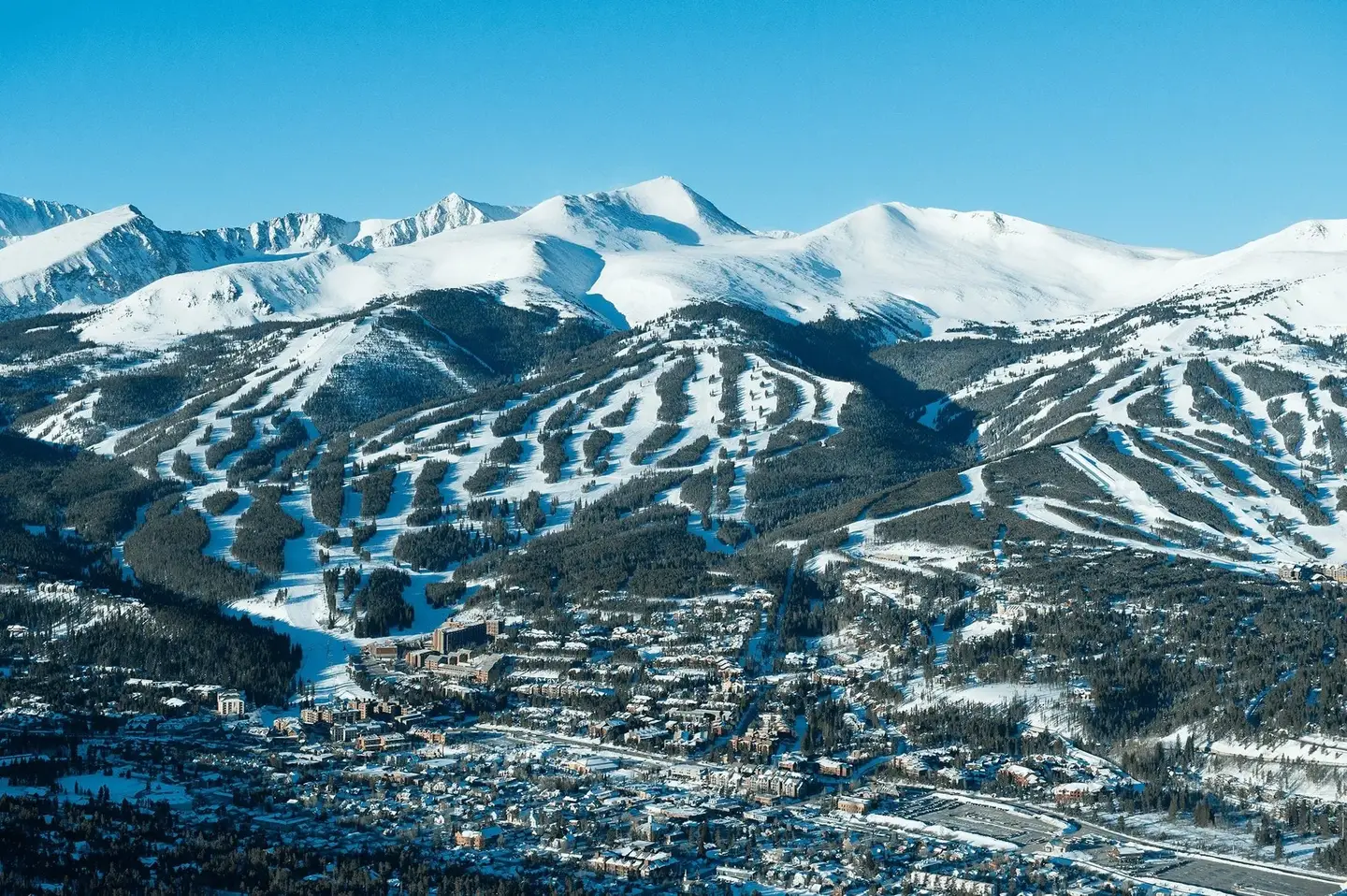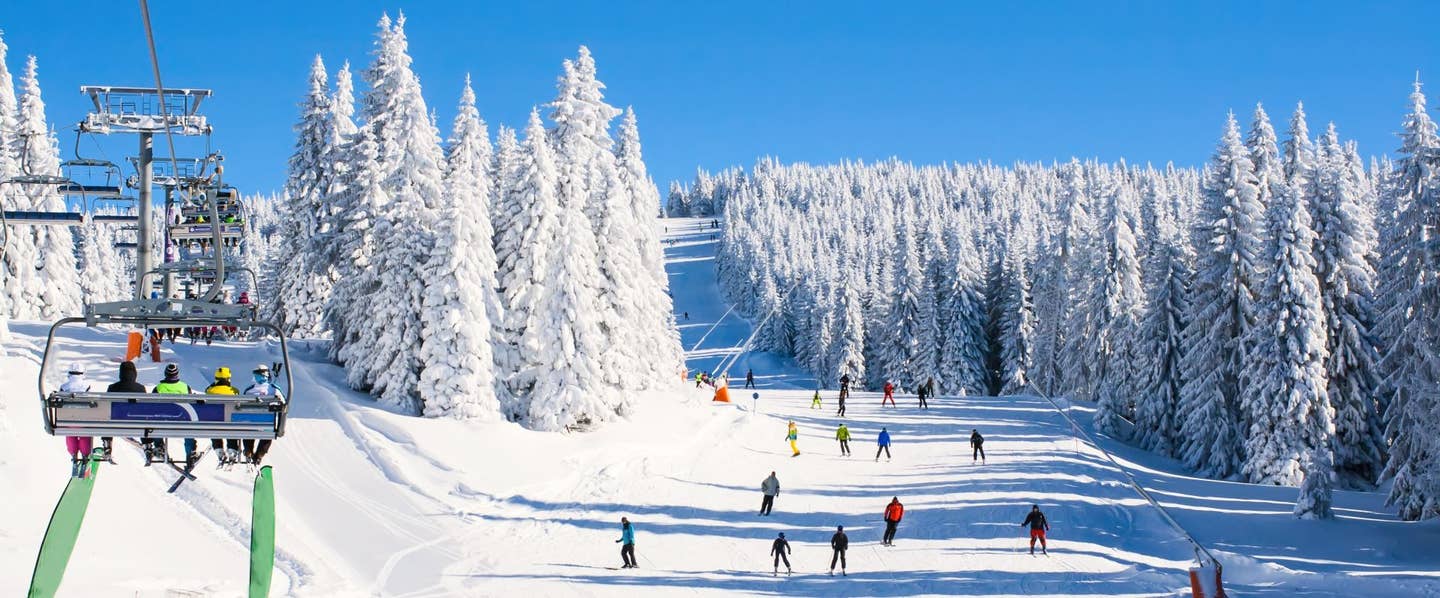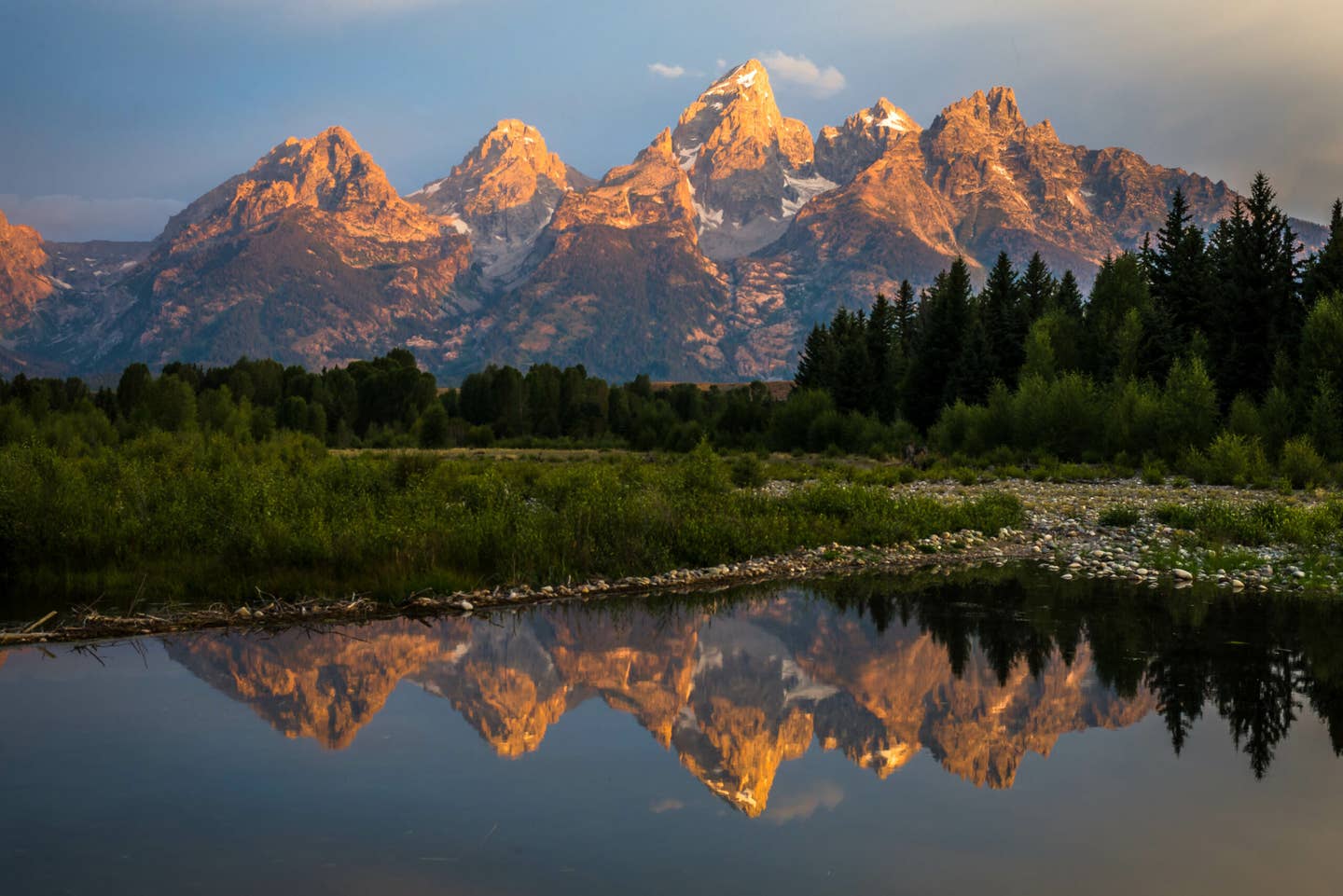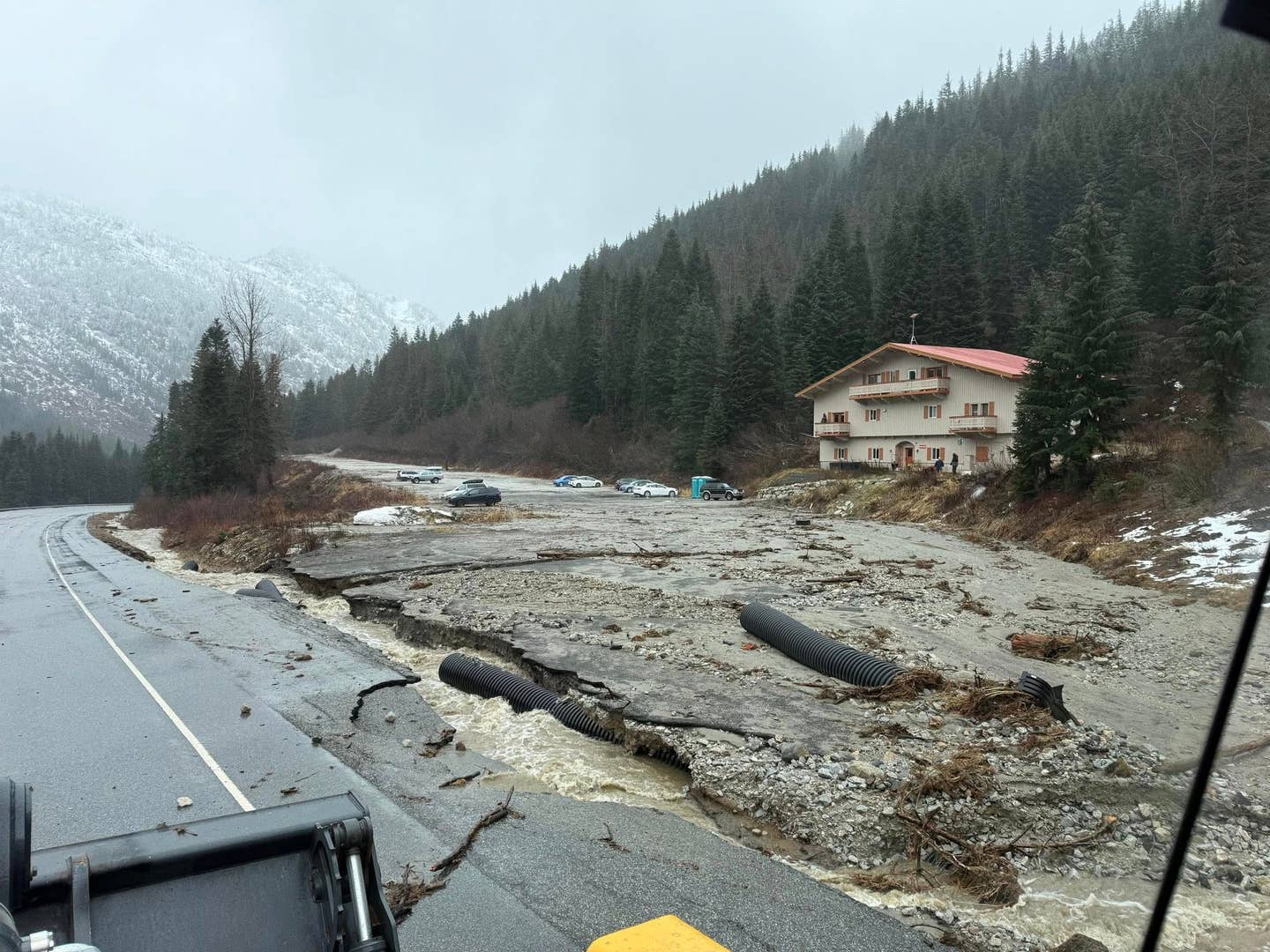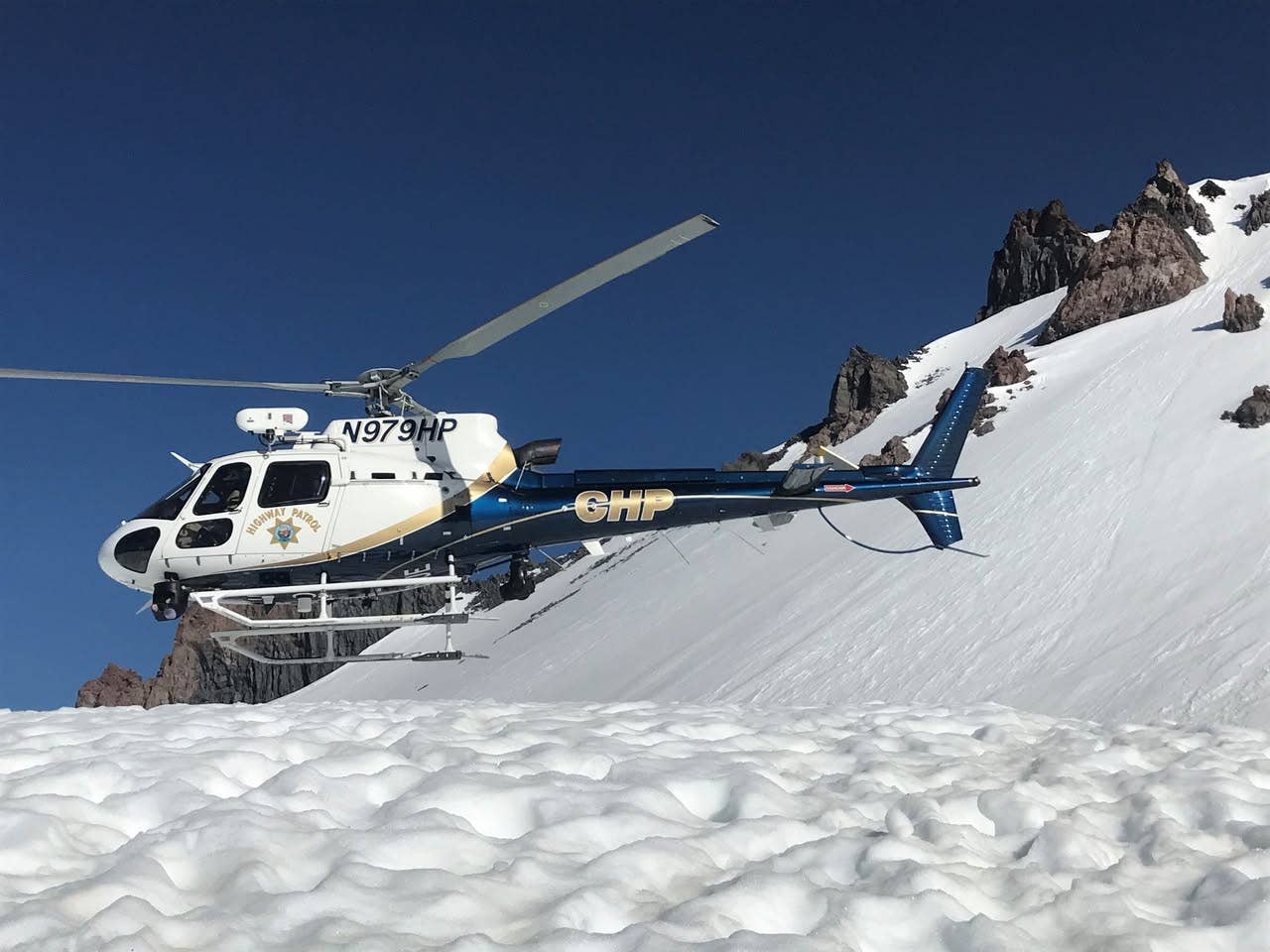

Solo Climber Seriously Injured in 300-Foot Fall On Mount Shasta
Popular Stories
On August 10, a solo climber was seriously injured in a high-elevation fall on Mount Shasta, California, after losing control while glissading on the mountain’s upper Avalanche Gulch route. According to the U.S. Forest Service (USFS), the incident occurred at 13,000 feat near Redbanks, a notoriously steep and unforgiving section of the climb.
His ice axe was ripped from his hands mid-slide, leaving him unable to self-arrest. He tumbled several hundred vertical feet before coming to rest, suffering a leg fracture along with multiple cuts and abrasions. Unable to move, he waited for help while the Siskiyou County Sheriff’s Office coordinated a multi-agency rescue effort.
Mount Shasta Climbing Rangers from the USFS, alongside California Highway Patrol Air Operations, executed the recovery. A CHP helicopter inserted a ranger on-scene, who stabilized the injured climber before a hoist extraction to safety. He was flown to Mercy Medical Center in Mount Shasta City and is expected to make a full recovery.
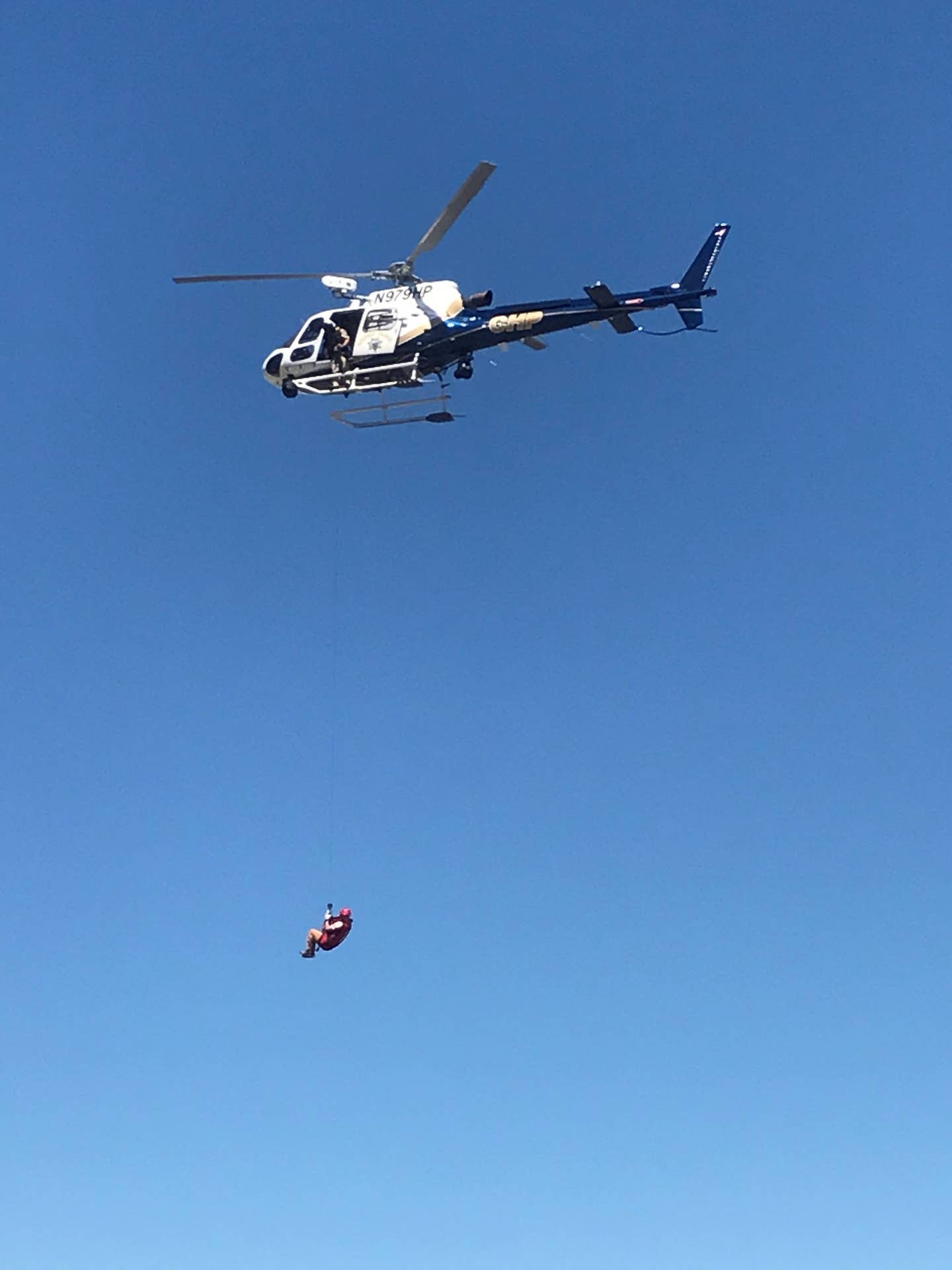
"Glissading (sliding down a snow-covered slope while seated, often using an ice axe to control speed) can be an efficient way for mountaineers to descend. However, when the slope is too steep or the snow too firm, even experienced climbers can find themselves in trouble." - USFS
Avalanche Gulch, the mountain’s most popular climbing route, is treacherous in late summer. Firm, patchy snow and exposed rock increase the risk of falls and injuries.
Sign Up for the TGR Gravity Check Newsletter Now
"Safe glissading requires soft snow, a gentle slope with a clear run-out, and the use of proper technique. Crampons should always be removed before attempting it, and both the ice axe and heels of the boots should be used to control speed. Even then, caution and a slower pace are key to avoiding accidents on the mountain, 'faster than walking' is fast enough." - USFS

At 14,179 feet, Mount Shasta is the second-highest peak in the Cascades and a year-round magnet for climbers, skiers, and mountaineers. While its broad shoulders and appealing summit draw thousands annually, its glaciers, steep chutes, and volatile weather demand respect.
The August 10 rescue serves as another reminder. On big mountains, preparation and caution matter as much on the descent as the climb up. If you glissade, be careful!
